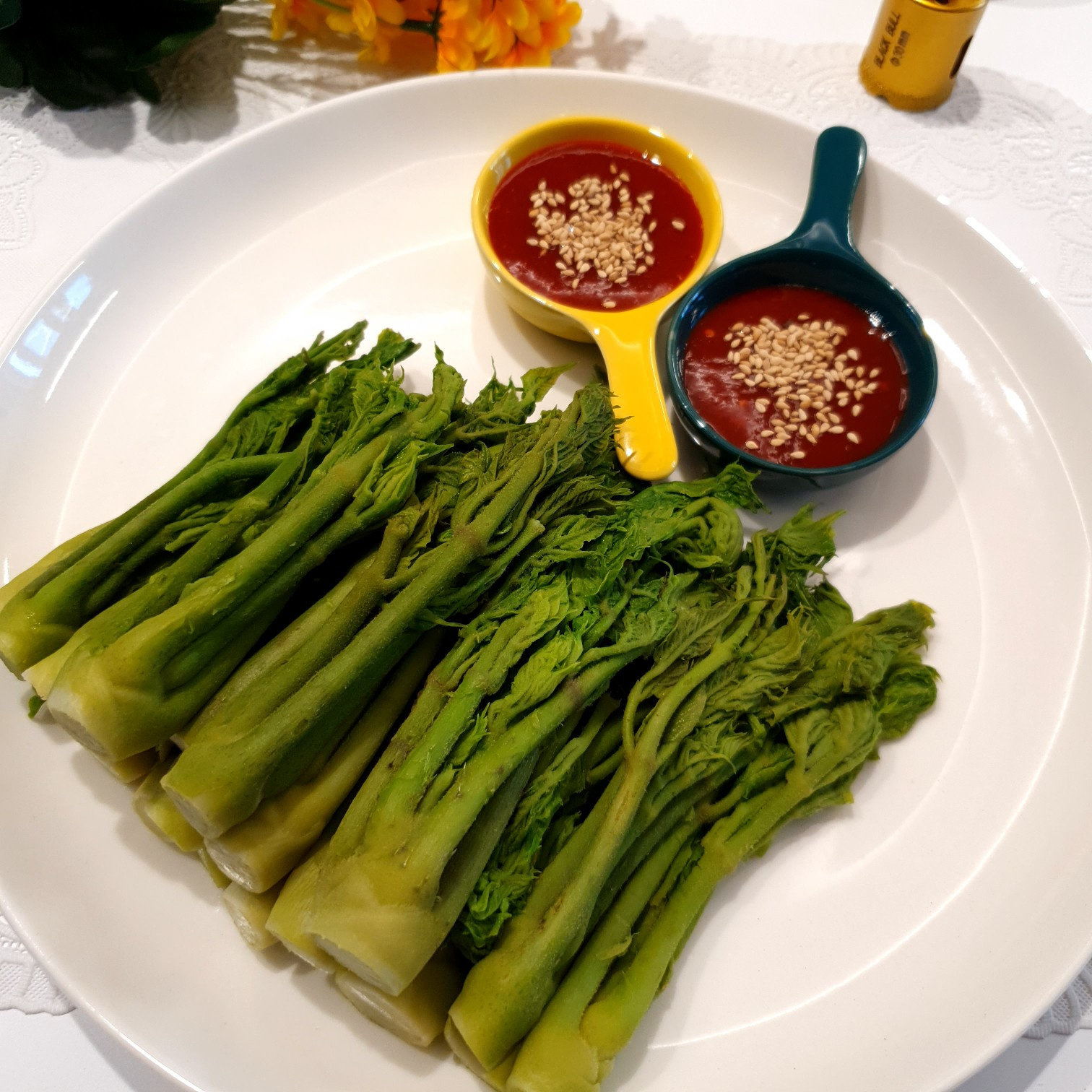How to Blanch Asparagus (Dureup): A Simple Guide
Easy Method for Blanching Dureup and Preparing Dureup Dishes

A friend gifted me some fresh Dureup, a seasonal delicacy that’s perfectly in season right now! I’m here to share my foolproof method for blanching Dureup, ensuring you capture its delicate flavor and texture.
Main Ingredients- Approximately 15 Dureup stalks (about one handful)
- A pinch of coarse salt (for blanching)
Dipping Sauce & Garnish- Gochujang-based dipping sauce (store-bought or homemade)
- Toasted sesame seeds (for garnish)
- Gochujang-based dipping sauce (store-bought or homemade)
- Toasted sesame seeds (for garnish)
Cooking Instructions
Step 1
Prepare about 15 fresh Dureup stalks. Choose ones that are firm and haven’t opened their buds too widely, indicating peak freshness.

Step 2
Trim the tough bottom ends of the Dureup stalks with a knife. Gently remove any rough or dry outer leaves attached to the surface for a cleaner presentation and easier eating.

Step 3
After trimming the ends and removing the outer leaves, your Dureup is now neatly prepared and ready for blanching. You’ll notice how much more appealing it looks!

Step 4
Bring a pot of generously salted water to a rolling boil over high heat. Add about 1/2 teaspoon of coarse salt. Adding salt helps maintain the vibrant green color of the Dureup and also aids in sanitation.

Step 5
Once the water is boiling vigorously, carefully add the trimmed bottom ends of the Dureup stalks first. Blanching the tougher stems before the leafy parts ensures even cooking. Let the stems cook for about 2 minutes.

Step 6
After the stems have blanched for 2 minutes, add the rest of the Dureup to the pot. Submerge the stalks and leaves and blanch for just about 1 more minute. Overcooking will make them mushy, so timing is crucial for that perfect crisp-tender texture.

Step 7
Immediately after blanching, transfer the Dureup to a bowl of cold running water. Rinse them thoroughly multiple times. This rapid cooling stops the cooking process and helps preserve the Dureup’s crispness and fresh texture.

Step 8
Drain the blanched Dureup well in a colander. When arranging on a plate, gently squeeze out any excess water from the leaves with your hands to prevent a watery presentation. Serve and enjoy the delightful, slightly bitter, and aromatic taste of Dureup with your favorite gochujang dipping sauce!



